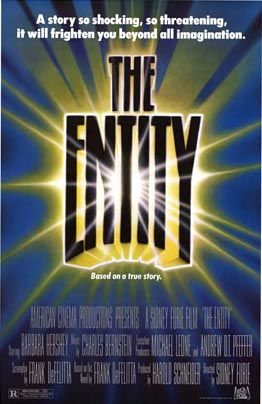

The Entity
By Scott Stilphen (2003)
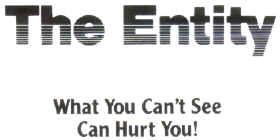
This game was mentioned in an early 20th Century Fox catalog and based on the 1982 movie of the same name. Mark Klein's only prototype copy of this game was archived in 2002. 250 boxed copies were made and released the following year. It's a 4K game with 8 different game variations:
1, 4 Beginner
2, 5 Advanced
3, 6 Expert
4, 8 Easy
Games 1-4 have a visible Entity
Games 5-8 have an invisible Entity
Left Difficulty switch:
A - constant speed containment walls
B - accelerating speed containment walls
The Entity wasn't a particularly good movie, and its subject matter not especially conducive for a video game. The movie is based on a book by Frank DeFalitta (who also wrote the screenplay) and is partially based on a true story of a woman who was tormented and sexually molested by an invisible demon. The fictional part of the movie's story involves trapping the demon or entity and freezing it with liquid helium. With the game, having the Entity in contact with a vat of liquid
helium is actually a bad thing!
The objective of the game is to force the Entity to move to the highest possible level of existence, through portals in horizontal barriers that continually keep scrolling down. This must be done as fast as possible to prevent the Entity from being pushed into the vat of liquid helium at the base of the screen. Can you avoid the Entity's chilling destruction before running out of energy?
At the top of the screen is your score. Below that are 2 meters. The top (red) one indicates your reserve energy (a full meter equals 4 chances). Each time the Entity is pushed into the vat, your energy will decrease by 25%. Every 50th barrier that's cleared will increase this by 25%. The blue meter indicates how much liquid helium you have - each tap of the fire button sprays some on the Entity to slow it down (cutting its speed roughly in half), but it will regain
its speed as it thaws. Yes, apparently a small spritz of liquid helium on the entity is good, but a vat of it is bad. Every 10th barrier that's cleared will replenish your helium supply. The current plane of existence is displayed at the bottom of the screen.
The joystick controls 2 vertical containment walls. You must move the walls to the edges of the portal. When a wall is in position, it locks in and turns red; when both sides are locked, the Entity will pass through the portal. When you lock the first wall, the Entity will then sense that you are about to trap it, and it also turns red and speeds up. This makes it harder to lock the other side! A good strategy is to get one wall as close to the edge of the portal
w/o locking it, and then locking the opposite wall first. Keep repeatedly pushing the joystick in the direction you need to move the other wall. This has the effect of slowing the Entity down just enough to lock the wall in. You also have the option to unlock a wall, by pushing the joystick down. It takes a second or two for this to happen (during which you'll hear a rising tone), so on higher levels it's only wise to do this if you have time to spare. Note that
every 5th barrier has an opening that is not fixed, which offers more of a challenge. The Entity will increase speed each time it is transferred to a higher plane, which causes it to be more resistant to your containment efforts! If you can't contain it by the time the barrier moves to the bottom of the screen, it will be frozen in the liquid helium. If there's any energy in reserve, it will re-materialize at a slower (cooled down) speed.
Your score is based on the number of walls cleared, and the faster you can get past a barrier (and the closer you can keep the Entity at the top of the screen), the more points it's worth. Each portal you pass through is worth 100 points, and every 10th portal is worth 500 points. If you play long enough, the Entity will reach its top speed, but it's still possible to continue by using the above strategy, and with sparing use of your helium.
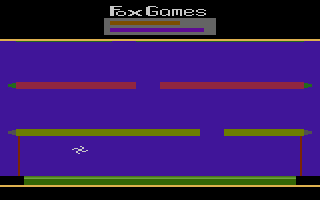
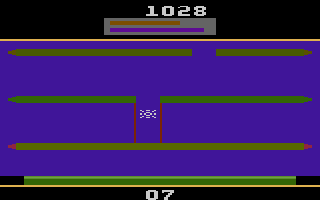
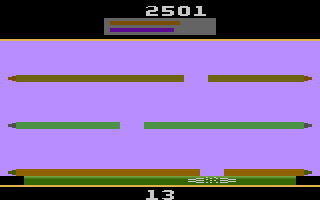
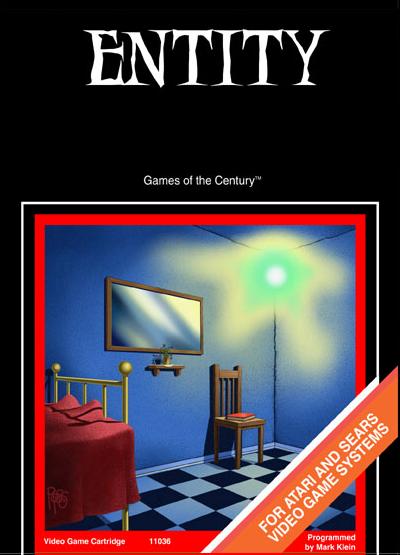
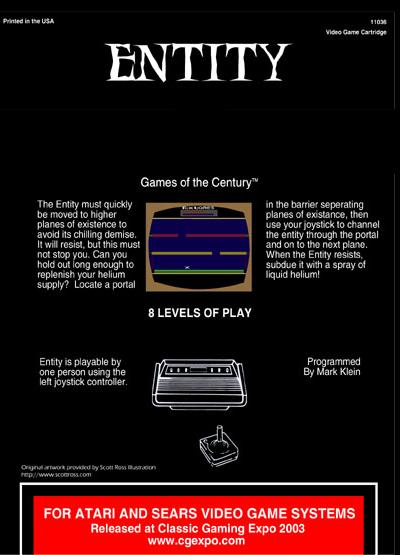
Reproduction box. 250 boxed copies were made. Why they chose to use some cheesy homemade artwork for the packaging
when they should have used the far-superior original artwork and type font from the movie (below), we'll never know.
